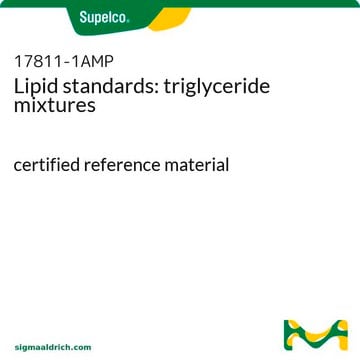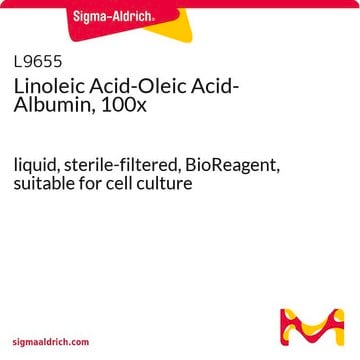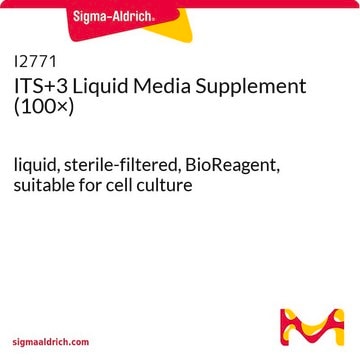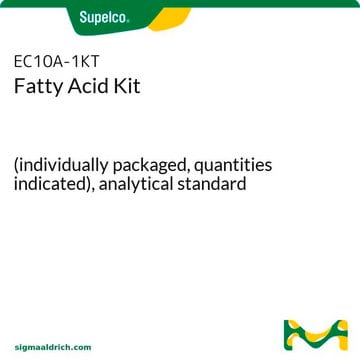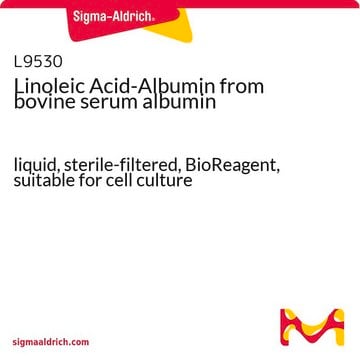L5146
Lipid Mixture (1000×)
liquid, sterile-filtered, BioReagent, suitable for insect cell culture
Synonyme(s) :
Lipid Mixture for cell culture
Sélectionner une taille de conditionnement
Sélectionner une taille de conditionnement
About This Item
Produits recommandés
Stérilité
sterile-filtered
Niveau de qualité
Gamme de produits
BioReagent
Forme
liquid
Composition
cholesterol, 4.5 g/L
cod liver oil fatty acids (methyl esters), 10 g/L
polyoxyethylenesorbitan monooleate, 25 g/L
D-α-tocopherol acetate, 2.0 g/L
Technique(s)
cell culture | insect: suitable
Température de stockage
2-8°C
Application
Actions biochimiques/physiologiques
Produit(s) apparenté(s)
Mention d'avertissement
Danger
Mentions de danger
Conseils de prudence
Classification des risques
Eye Irrit. 2 - Flam. Liq. 2
Code de la classe de stockage
3 - Flammable liquids
Classe de danger pour l'eau (WGK)
WGK 2
Point d'éclair (°F)
57.2 °F - closed cup
Point d'éclair (°C)
14.0 °C - closed cup
Faites votre choix parmi les versions les plus récentes :
Certificats d'analyse (COA)
Vous ne trouvez pas la bonne version ?
Si vous avez besoin d'une version particulière, vous pouvez rechercher un certificat spécifique par le numéro de lot.
Déjà en possession de ce produit ?
Retrouvez la documentation relative aux produits que vous avez récemment achetés dans la Bibliothèque de documents.
Les clients ont également consulté
Active Filters
Notre équipe de scientifiques dispose d'une expérience dans tous les secteurs de la recherche, notamment en sciences de la vie, science des matériaux, synthèse chimique, chromatographie, analyse et dans de nombreux autres domaines..
Contacter notre Service technique





